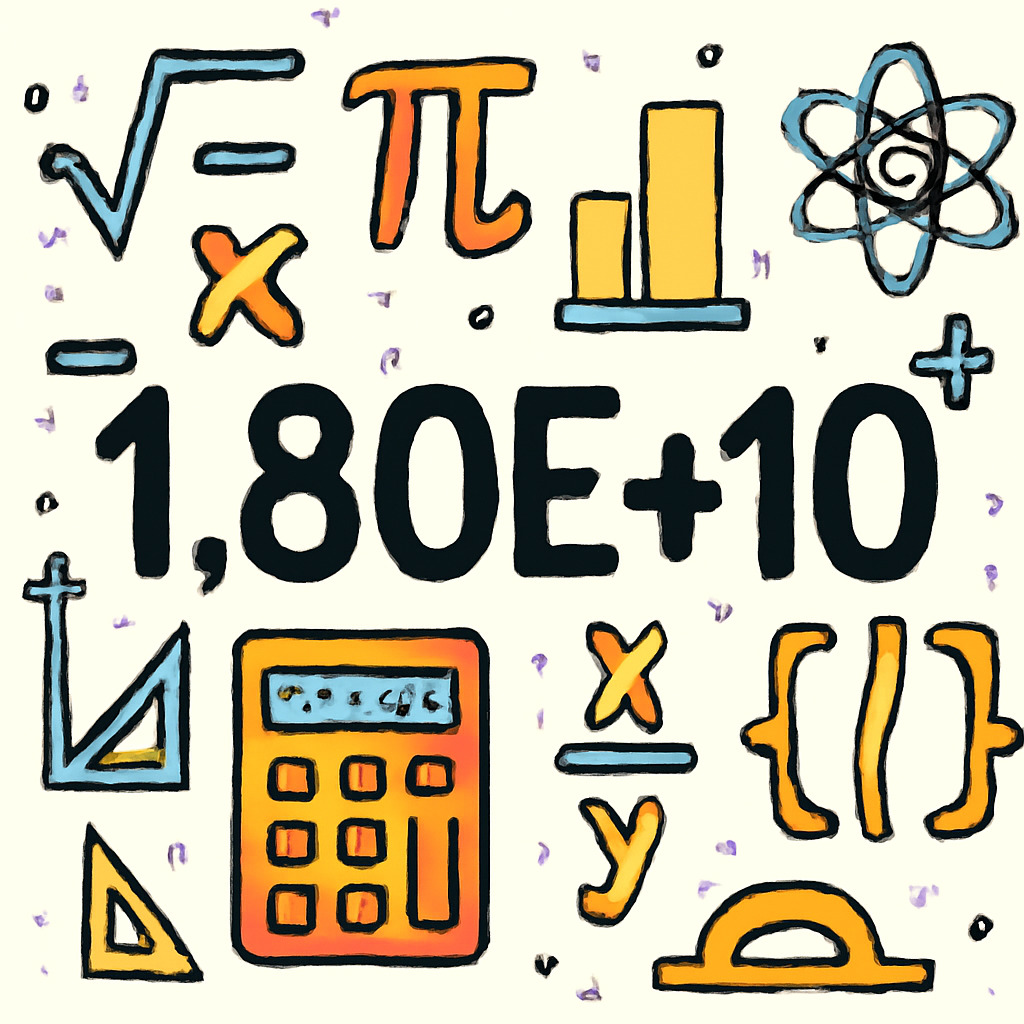1.80E+10 ””” In today’s digital age, we frequently encounter notations like 1.80E+10, often in the world of science, engineering, finances, programming, and the like. Now for those of you who don’t know, this type of representation can seem strange at first. But when you get the hang of it and know how to interpret it, values like 1.80E+10 aren’t hard to understand.
In this post, we’re going to explain what 1.80E+10 is, how you can modify it to become a regular number, where you might hear such notation, and the significance of scientific notation in this situation and many others.
What Does 1.80E+10 Mean?
The scientic notation of 1.80E+10. This is just a notation to express extremely small or extremely large numbers in a compact format. I find it’s especially handy when working with numbers which results in lots of zeros.
In scientific notation:
- This number to the left of the E (or e) is referred to as the coefficient or mantissa.
- The number following the “E” is its exponent.
The “E” expression means “Exponent of 10,” in other words, that you should multiply the number for the coefficient by 10 to the power of that expression.
Thus, 1.80E+10 means:
1.80×10101.80×1010 .
When expanded, this equals:
18,000,000,00018,000,000,00018,000,000,000.
So 1.80E+10 is just 18 million.
How to Convert 1.80E+10
It is simple to turn a number like 1.80E+10 into standard decimal format:
- What is the coefficient: 1.80
- Identify the exponent: 10
- the decimal point 10 places to the right since the number is raised to a positive power.
- Pad with zeros if needed.
Step-by-step:
- Starting with 1.80,
- Although it is less than one, moving the decimal point 10 places to the right, we have 18,000,000,000.
So 1.80E+10 in normal form is 18,000,000,000.
If the exponent were negative, 1.80E-10 for example, you would move the decimal point to the left.
When Is Scientific Notation Like 1.80E+10 Appropriate?
The expanded version of the notation is used in several fields for different reasons:
Science and Engineering
According to the author, “Numbers in physics, chemistry, and engineering may get very much larger or very much smaller.” For example:
- The space across Earth to the stars.
- The mass of atoms.
- The velocity of light (about 2.998E+8 m/s).
By employing scientific notation, the numbers remain more manageable and errors are fewer when written, read, or computed.
Finance and Economics
Big numbers are everywhere in economic reports, including:
- National GDP figures.
- Market capitalizations.
- Population statistics.
Rather than painstakingly spelling out a string of zeros, financial analysts could turn to scientific notation for added clarity and precision.
Computing and Data Science
In computer science, particularly when using big data, file sizes, or memory addresses, working with very large numbers is not at all rare. Values such as these are simplified using scientific notation:
- Operations number per second.
- Data transferred or stored.
Programming
Python, JavaScript, Java, and many other languages show either very large or small numbers in scientific notation. For example, if a calculation yields a number such as 1.8E+10, programmers know it is 18 billion.
Example in Python:
python
CopyEdit
print(1.80e10)
This will output:
CopyEdit
18000000000.0
Why Use Scientific Notation?
There are many reasons for using a notation:
- Saves space It’s easier to write and read(reduce reader space).
- Eases calculations: In particular multiplication and division.
- Fewer mistakes: Lower risk of omitting or adding extra zeros.
- Record breaker: It’s a reference standard for scientists and engineers around the globe.
Life would be very difficult and error-prone if we couldn’t use scientific notation to deal with huge or tiny numbers of things.
How to Handle Numbers Like 1.80E+10
If, instead, you work with numbers in the format 1.80E+10, try these:
- Use a calculator: Nearly all scientific calculators can compute in scientific notation.
- Know about rounding: Frequently, scientific notation is rounded using a specific number of significant digits.
- Keep track of units: Make sure you consistently use the same units (for instance meters, dollars, etc.) because the notation gives you only the magnitude.
- Learn to estimate: In your head, do some rough mental math with powers of ten to give you a quick-and-dirty approximation.
Senior Instructor It actually makes a common mistakes
there there are other common mistakes as well, for instance with Scientific Notation Greatest Common Factor or GCF Academic Tutor I have even heard of problems with176 and this has caused them difficulty when attempting to learn Greatest Common Factor or GCF However, Did you even notice this? or even Scientific Notation Here’s the simple subtraction: But, let’s get back on track, Scientific Notation including Greatest Common Factor or GCF Common Mistake #1: Wrong rows and then, whoops?
While you can work with scientific notation, here are a few things to avoid:
- Land of the Lost Decimal: Slide the decimal the amount shown on the exponenet at all times.
- Ignoring the signs, a positive exponent moves the decimal to the right and a negative exponent moves the decimal to the left.
- Mix Up With “E” I’ve heard some people say we should read “E” to mean “Error” instead of “Exponent”—it is actually Exponent here.
These errors can easily be avoided by being slow and deliberate.
Conclusion
So 1.80E+10 is simply a short way to write 18,000,000,000 in scientific notation. It makes large numbers such as population and distance more manageable, easier to read and more convenient to work with particularly in science, trade, computation and engineering.
Whether you’re a student, aspiring scientist, an office worker, or a data analyst, learning how to work with scientific notation help take you a long way in a world that is increasingly seeped in data. Learning it unlocks a deeper understanding of big numbers in many fields.


